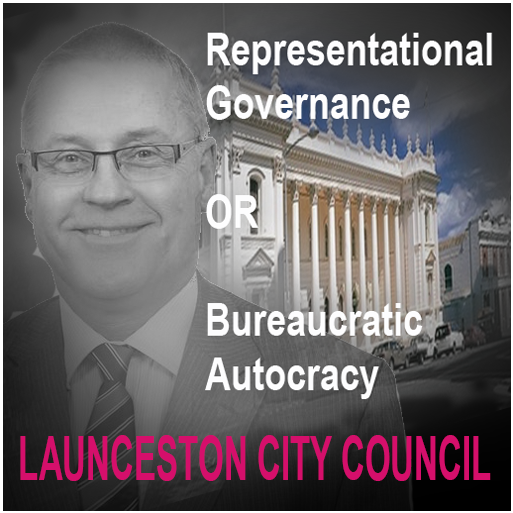Launceston Chamber of Commerce
Attention Jan Davis,
Attention Jan Davis,
The Ratepayers Association has been pursuing Launceston City Council for decades concerning the need to make provision for and plan for an Eastern Bypass Road.
This effort has long preceded the arrival of Robert Dobrzynski. It more than a little disappointing to read in today’s press that Mr Dobrzynski, on the eve of his departure from his position as General Manager, that he no longer believes a bypass is necessary.
Many Aldermen, including those presently in their positions, were elected on promises and platforms, that they would work for a bypass to be constructed.
The need for a bypass was first established in the Launceston Area Transport Study (LATS) in the 1960s. Alderman Ray Shipp famously carried a copy of this study with him to LCC Meetings and often spoke about it during his long term of service as an Alderman.
Provisions existed in Launceston Planning Schemes to reserve land for the planned bypass, but then planning fashion for the last decade or so, determined that road planning generally was no longer a necessary requirement for Planning Schemes, much to the dissatisfaction and disagreement of the community, including the Ratepayers Association, who took up this lack of planning for roads with the Tasmanian Planning Commission during its Hearings into latter Scheme plans.
The Ratepayers Association took up the debate on many occasions – when developments that would block the course of the Eastern Bypass were proposed; when long term strategic plans and visions were sought and published; when opportunities arose for infrastructure priority lists to be compiled ahead of Federal Elections etc.; and when ill-conceived “bandaid” proposals were aired, such as the formation of a road link extension along the old railway embankment from Forster Street Invermay, instead of the then-vacant course and superior situation of extending Lindsay Street through the edge of the Railyards via Black Bridge to Henry Street to the bypass course.
When the Seapac yard and railway terminus (now TOLL) was first developed, strenuous argument was raised about why this should not have been permitted due to the absence of the Bypass Road and the lack of roads connecting that site to other parts of the City. Residents of Elphin Road, including Mollie Campbell-Smith and the Cimitiere St Glebe Area that in the 1980’s was being rehabilitated as a desirable inner city residential precinct, formed themselves into a very credible and vocal opponent of the TOLL site and opposed the damage being caused to the Cimitiere Street and Elphin Road routes that was to serve it. Launceston City Council promised to accelerate the Eastern Bypass construction and in the interim, extended Boland Street along the edge of the North Esk River, utilising the recently acquired Goods Railyard site, to alleviate the pressures on Cimitiere Street.
It is all too easy for Robert Dobrzynski to now tell Launceston residents and ratepayers that a Bypass Road is no longer required. Launceston residents and road users know only too-well that the roads through the city are hopelessly inadequate, and it is in part this situation and congestion in the central area that has lead to the death of the Central Business District, once the most vibrant retailing and business hub in Tasmania. Congestion, heavy traffic loads and a lack of routes for traffic needing to get through or around the central area continues to be a huge problem, and relocation of retailing and commerce to the suburbs and surrounding municipalities has produced very bad and inefficient planning patters. The living and working amenity of Launceston City has diminished the economic health of the city and property values have plateaued before declining.
Accordingly, the Ratepayers Association supports you in your efforts to have an Eastern Bypass Road and the necessary cross-links planned, funded and constructed.
Yours faithfully,
Lionel Morrell
President
Tasmanian Ratepayers Association Inc.
EDITOR’S NOTE: Robert Dobrzynski came to Launceston as the General Manager from elsewhere with no experience of Launceston’s histories, heritage or any understanding of its sense of place. He now leaves the city and heads off for elsewhere with the spoils of his office, where presumably he has invested in a future well away from Launceston and Tasmania. More to the point he leaves in his wake twelve aldermen who he has serially overridden in their policy determinations under SECTIONS 62 & 65 of the Local Govt. Act. Its a sad and distressing truth and the city’s residents and ratepayers need to remember all this very well while looking towards the upcoming elections – State and Local Government.

